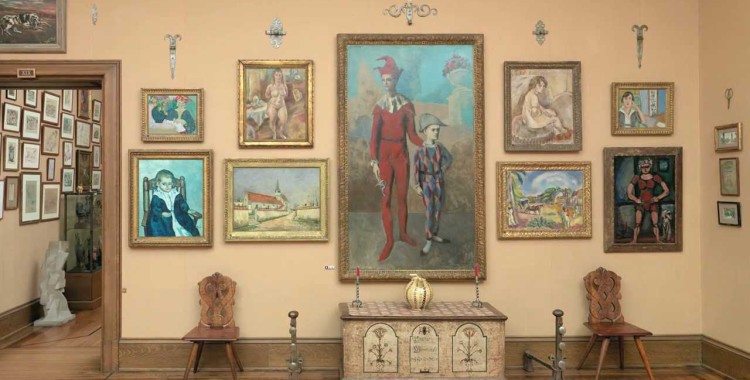
Cultural Economics Workshop: Collectors
November 23, 2015
by Diana Greenwald | Filed in: Collectors
The Association for Cultural Economics International recently hosted its North American Workshop at the Southern Economic Association 2015 annual meetings.
The workshop was an interesting sample of the on-going work in cultural economics, and a later post will be dedicated to a synopsis of the event. However, several issues came up that relate to the current series of posts about single-collector museums. In particular, work by Géraldine David (Solvay School, Université Libre de Bruxelles) and Rachel Pownall and her doctoral student Marina Gertsberg (Maastricht University) explored how art purchasers and collectors seem to influence the monetary value of a painting. David demonstrated that purchasers at Paris’ Hôtel Drouot in the interwar period were willing to pay a premium for artwork that came from complete private collections. Gertsberg—who presented her joint work with Pownall—presented an examination of dealers’ behavior as purchasers in London auctions during the long nineteenth century.
In the discussion of these two papers, a couple of question emerged about collectors—both those who are also professional dealers and those who are engaged in other occupations—and their ability to discern quality in art. Were collectors the predecessors to professional curators? Do some of them have taste that coincides with what art historical institutions have since deemed good or even masterpieces? Among collectors, were professional art dealers the most discerning—the ones with the most lasting taste—or were their motivations primarily financial and therefore their preferences were somewhat fickle and swayed by temporary trends in the broader market? There are no definitive answers to these questions. However, some examples may contribute to preliminary answers.
First, while top museums often receive gifts of entire collections, they typically only display a small proportion of that collection. Consider, for example, the collection of Catharine Lorillard Wolfe (1828- 1887), which was bequested to the Metropolitan Museum of Art upon her death. The collection of nineteenth-century European art was much-celebrated in the Gilded Age and was a central feature of the young museum’s collection. However, looking at the museum’s collection today, only some of Lorillard’s paintings are still in the collection (approximately 83 of the more than 100 given), and of those about half are still on display. The entirety of Wolfe’s taste does not overlap with what a curator at a top museum chooses to display. Obviously, this is not just about Wolfe’s taste—it is also about the growth in quantity and quality of the museum’s collection. Her selected paintings may still be good; they are just not as good among a field crowded with masterpieces that the museum has either purchased or received from a donation.
One can contrast what we can see of Wolfe’s collection with another collector whose entire holdings must be on display. The Barnes Foundation is a single-collector museum in Philadelphia that is governed by very strict rules about its collection and the display of that collection. As a result, walking through the Barnes allows one to see everything the founding collector chose. Good and bad: from Matisse and rare early American furniture to art by since-forgotten European artists and keys that Barnes included in his “ensembles.”
What emerges from the Barnes Foundation—and the study of collectors in general—is an aura of eclectic taste for art of uneven quality. Collectors do not seem to acquire works with the same motivations, intentions or training as professional curators do. Their tastes are not canonical. Art they acquired may now be considered canonical—but their entire collections are never uniformly masterpieces. However, we now only see the masterpieces on display in most museums (the Barnes is exceptional). This creates an ex-post-facto image of the collector as more focused and discerning of quality than was really the case. Economic support for not only the “winners” of art history, but also the “losers” was common. Before fully considering and accounting for this fact, art historians and cultural economists will have biased view of demand for art and its history.
Cultural Economics Workshop: Artists >>
<< Art & War: The Walters Museum
